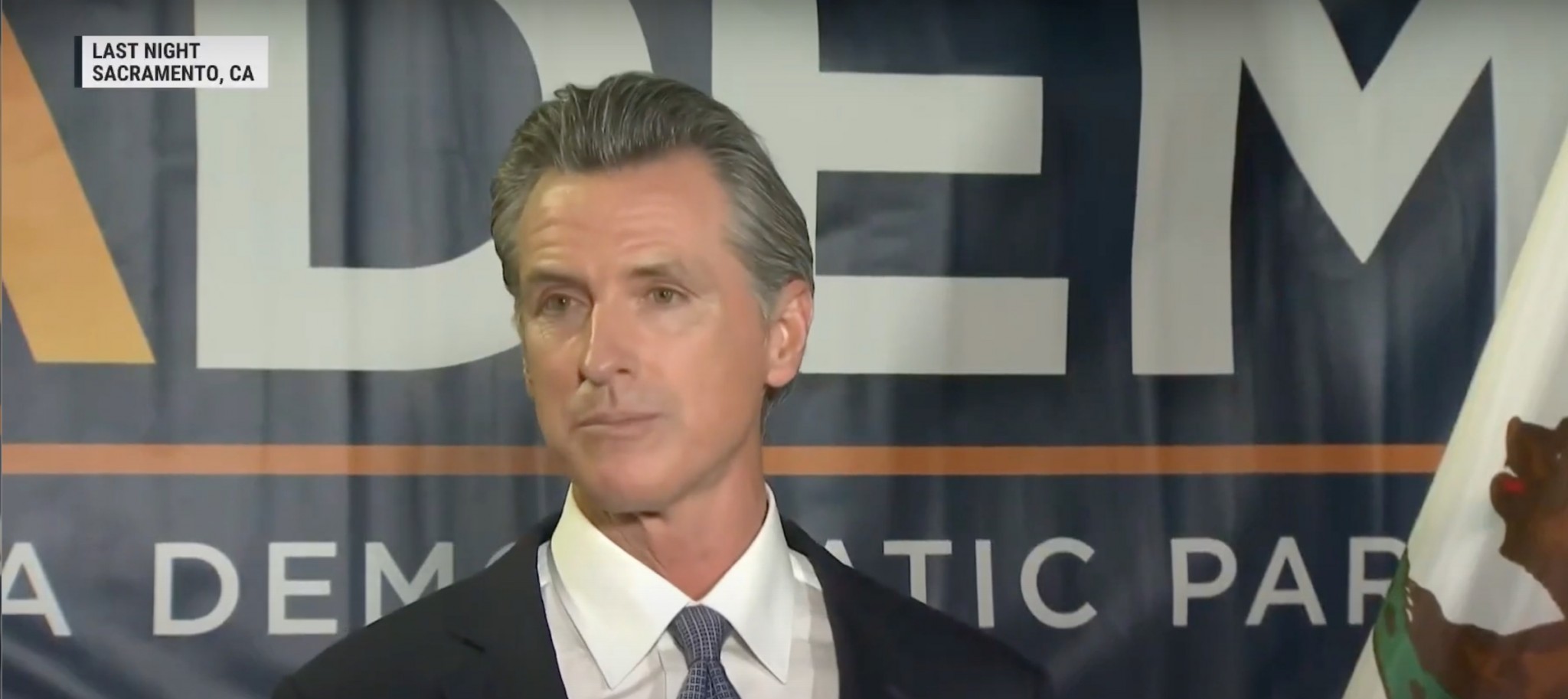Recalling a Nightmare

Sacramento
In the signature-gathering days of California’s second gubernatorial recall election, I repeatedly expressed my fears to conservative activists about the perils of heading down this path. If you take a swing at the champ, you better not miss. Are you sure you have the money and organization to unseat a governor with decent poll numbers?
Well, we got the answer last night and it wasn’t pretty. California Republicans have not run a serious candidate for governor since Arnold Schwarzenegger defeated the hapless Gray Davis in the 2003 recall election and then won re-election in 2006. Since then, the party mostly has put up candidates who had little chance of winning — but deep enough pockets to finance the race.
In 2010, moderate Republican Meg Whitman received only 41 percent of the vote against Jerry Brown despite spending $144 million in her personal funds. In 2014, Neel Kashkari received only 40 percent of the vote. His main claim to fame to the GOP was that he was more palatable than a conservative candidate who might have killed Republicans on down ticket races.
At that point, we all realized the obvious: The Republican Party could not win statewide office, except in a fluke. Businessman John Cox was the 2018 sacrificial lamb, after he emerged as the second contender in the state’s top-two system. Despite running a decent campaign, Cox managed only 38 percent of the vote against Newsom, who was a far-less formidable opponent than Brown. Newsom didn’t even have to run any negative ads.
Conservatives have complained that the state GOP is too moderate and, indeed, Tuesday’s recall election put to the test the idea that the way to win California is through a populist right revolt. Because of their design (thumbs up or down on the incumbent, and then a free for all on the replacement ballot), lower-turnout recall elections should be an easier lift for Republicans in a heavily Democratic state.
Newsom had a big target on his back. Unlike Brown, he has governed as a full-on progressive rather than as a traditional liberal Democrat. His approach to COVID-19 was heavy handed, as he issued a succession of ever-changing executive orders. He signed a union-inspired labor bill (Assembly Bill 5) that has cost tens of thousands of freelance jobs in the midst of a pandemic.
Under his watch, the Employment Development Department couldn’t manage to pay legitimate unemployment claims even as it squandered an estimated $31 billion in dubious claims, including to prison inmates. The governor had embarrassing scandals. He partied at a tony Napa Valley restaurant in the midst of his stay-at-home orders.
He misrepresented his administration’s forest-clearance efforts, as wildfires raged across the state. Localities have started rationing water as the reservoirs dry up. His administration did little about the water shortages since the end of the last drought. And there were plenty of other reasons for ordinary Californians to be fed up with the direction of the state.
Yet, the latest vote count shows that voters rejected the recall by 64-percent to 36-percent margins. An unabashed conservative, talk-show host Larry Elder, was the leading replacement candidate. This was an unmitigated disaster, as he never broadened his appeal beyond the base. Now, Newsom and his fellow Democrats are more powerful than ever. Republicans took a swing and hit themselves in the face.
It’s easy enough to blame “stupid” California voters, but the blame falls squarely on the recall advocates and the campaigns run by the replacement candidates. In my chats with conservative activists running up to the election, many embraced two lines of thought. They argued that a) the polls were wrong and that the recall was going to succeed because no one they know supports the governor or b) the recall was going to fail because of voter fraud.
The polls were off — but in the opposite direction. The “no” vote was far higher than predicted. And making baseless claims about vote rigging — even before all the voting took place — is ridiculous and counterproductive to boot.
Does anyone really think that voter fraud explains why a Democratic governor won a recall election in an overwhelmingly Democratic state in an underfunded recall campaign in which the lead replacement candidates campaigned as if they were running in Alabama? Go ahead and believe that nonsense — but it will only delay the party’s ability to get back in the game.
From its start, the recall doubled down on the conservative base. The original recall petition argued that, “Governor Newsom has implemented laws which are detrimental to the citizens of this state and our way of life. Laws he endorsed favor foreign nationals, in our country illegally, over that of our own citizens.” Such language did nothing to appeal to a broader audience and merely gave Democrats ammunition.
It was simple for Democrats to portray the election as a “Republican recall” — the work of Trump supporters in a state where the former president received 34 percent of the vote. In fact, Trump’s tally against Biden closely mirrors the percentage of voters who backed the recall, which is about what one would expect in a campaign that echoed the themes of a Republican primary.
Steven Greenhut is Western region director for the R Street Institute. Write to him at sgreenhut@rstreet.org.
*** This article has been archived for your research. The original version from American Spectator can be found here ***


